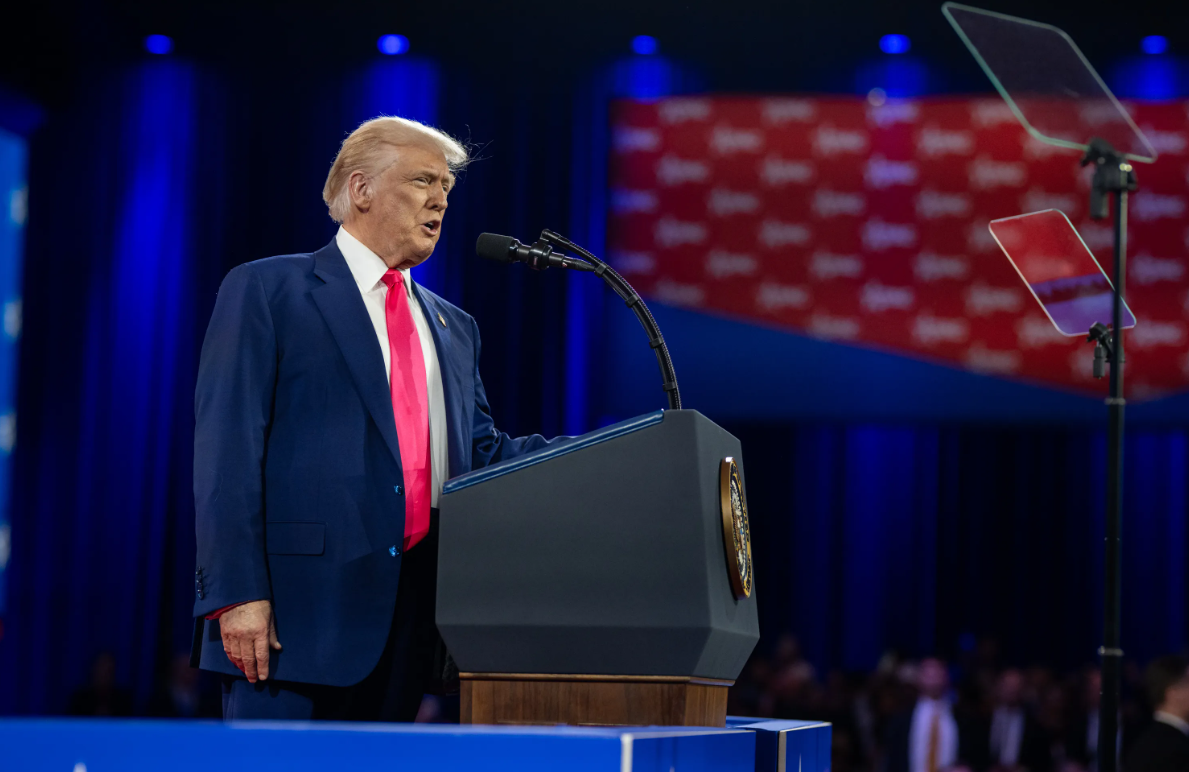
In a dramatic turn of events, a major breaking news story has emerged from the United States that has captured global attention. Contrary to what many might have assumed, this news isn’t about the U.S. GDP data—which is expected later in the day—but rather about a significant development related to President Donald Trump’s controversial tariff policy.
So what exactly happened?
To understand the situation, let’s take a step back. While Trump had postponed the implementation of the "Reciprocal Tariff" policy for 90 days, he had already announced a 10% “ideal tariff” on all countries, including India, Vietnam, and others. This move was positioned as a precursor to the more aggressive reciprocal tariffs that were expected to come into effect on July 9.
Trump’s tariff measures had sparked concerns among various stakeholders, including American importers and legal experts. As a result, multiple groups had challenged the legality of these tariffs in court. Now, the verdict is out—and it’s a decisive one. The court has blocked all tariff-related decisions currently in motion.
Naturally, many are questioning: why did the court do this?
The answer lies in the legal process. The Trump administration justified the tariffs under the International Emergency Economic Powers Act (IEEPA). However, the court disagreed with this justification, stating that the scope of the IEEPA does not permit the unilateral implementation of such broad economic policies. Instead, any such major trade decision should go through a proper legislative process involving Congress, the Senate, and the House of Representatives.
In simpler terms, Trump bypassed the required democratic procedures. The court ruled that such significant tariff actions are not legally permissible without congressional approval.
When questioned in court, Trump’s legal team argued that the tariffs were imposed for national security reasons. They cited geopolitical tensions, specifically the conflict between India and Pakistan, claiming that the threat of tariffs helped prevent a potential nuclear war by pressuring both nations into a ceasefire. Trump claimed that by threatening trade relations, he was able to mediate peace, and thus the tariffs had a global benefit.
However, the court rejected this line of reasoning. The judges clarified that the India-Pakistan issue posed no direct threat to U.S. national security and therefore could not be used as a justification for such economic measures under U.S. law. The court explicitly stated that Trump’s tariff decisions were illegal and not allowed.
This decision brought significant relief to global businesses, especially those with exposure to U.S. trade policy. The stock markets reacted swiftly. The Dow Jones Futures skyrocketed by 400–450 points immediately after the news, and global indices followed with a wave of green. Indian energy companies like Waaree Energies and Premier Energies, which could have been directly impacted by U.S. tariffs, saw strong rallies. Waaree Energies surged 8.5% in celebration.
This development has also given India an opportunity to reassess its negotiation stance with the United States. Previously under pressure due to Trump's tariff threats, India now has stronger leverage to engage in more balanced discussions. With Trump’s tariff policy temporarily blocked, India should avoid rushing into any new trade agreements without reevaluation.
So, is this the end of the tariff saga?
Not quite. Trump has made it clear that he sees the tariff mission as a “mission from God.” He has backup plans and intends to pursue all legal avenues to revive his tariff strategy. Trump plans to appeal the current decision in the U.S. Court of Appeals. If that fails, the case may eventually reach the U.S. Supreme Court.
Trump has vowed not to back down, saying he will push forward using all available options—legal, political, or otherwise. His determination has already had an impact. After initially rallying strongly, the Dow Jones Futures pulled back from a 400-point gain to just 200 points following Trump’s statement about bringing the tariffs back in a new form. Nearly half the gains were wiped out as the market realized the tariff risk still looms.
Looking ahead, all eyes are on July 9, the date Trump initially marked for the rollout of the reciprocal tariff policy. With about 40 days to go, the world will be watching for further developments. Though the current court decision has blocked the tariffs, Trump’s persistence means that the story is far from over.
India, in particular, must remain cautious and strategic. Even if Trump ultimately fails to implement reciprocal tariffs through legal channels, he may introduce alternate trade barriers or policy shifts to achieve similar outcomes.
In summary, the key takeaway is this: Trump’s tariffs have been blocked by the U.S. Court of International Trade, marking a significant legal and political setback. Markets have responded with optimism, but the uncertainty isn't over yet. The next chapter will unfold in the appellate courts, and possibly in the Supreme Court.
Disclaimer:
This article is based on recent legal developments in the United States and includes interpretations relevant to international trade. The views expressed are for informational purposes only and do not constitute legal or investment advice. Readers are advised to consult official sources or trade experts before making any decisions.




